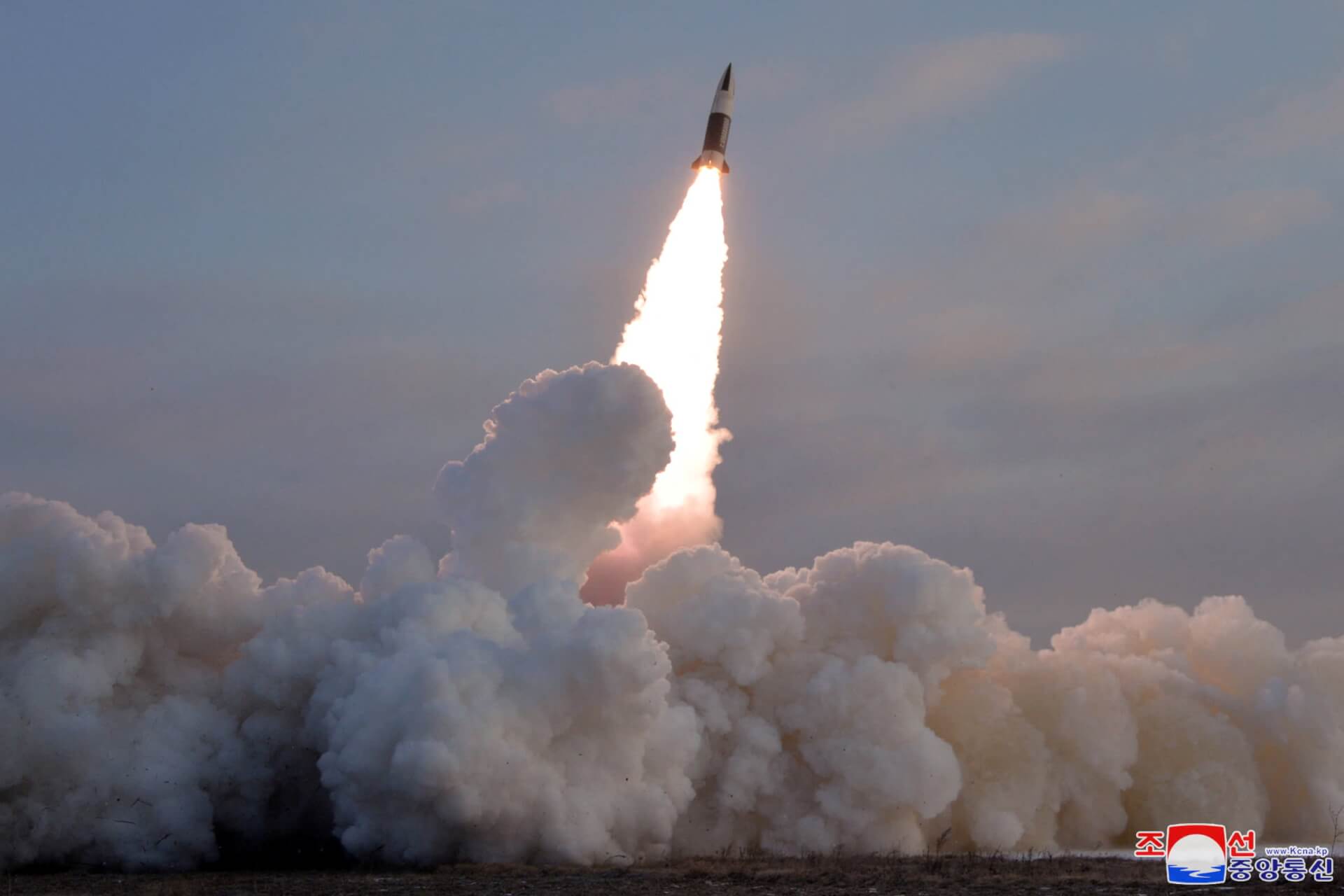A senior United States (US) official confirmed on Thursday that the two recent missile tests conducted by North Korea were of a new intercontinental ballistic missile (ICBM) system. The official added that the tests mark a “serious escalation” that Washington will punish with fresh sanctions.
North Korea had claimed that the tests carried out on February 26 and March 4 aimed to develop a reconnaissance satellite. However, the US official said that rigorous analysis had concluded that both launches were actually experimental precursors to a full-range ICBM launch.
The unnamed official further explained that both aforementioned tests “involved a relatively new intercontinental ballistic missile system” that Pyongyang had first showcased at a military parade in October 2020. The official claimed that the tests intended “to test elements” of the new ICBM system before Pyongyang eventually carries out a launch “in full range.” They further speculated that when the full test is carried out, the Kim Jong-un administration will likely attempt to disguise it as a “space launch.”
Warning that the North’s “unlawful and destabilising activities have consequences,” the official declared that “diplomatic negotiations are the only viable path forward for Pyongyang.”
U.S. says North Korea tested ICBM system as leader expands space effort https://t.co/9lVr8Tfy6K pic.twitter.com/h566VMeXOn
— Reuters World (@ReutersWorld) March 11, 2022
Since January, Pyongyang has conducted nine missile launches. The most recent launch was detected last Saturday. Its seventh and largest test was carried out in late January, when the secretive regime tested the hypersonic Hwasong-12 intermediate-range ballistic missile. Hypersonic weapons fly towards targets at lower altitudes and can achieve speeds more than five times the speed of sound—or about 6,200 kilometres per hour. The test makes North Korea part of a select group of countries that have attempted to develop hypersonic missiles.
Most missiles launched by the country have landed in the waters of the East Sea of Korea. In response to the aggression, neighbouring littoral states such as South Korea and Japan have expressed alarm, convened emergency security meetings, urged Pyongyang to return to dialogue, and continue to keep a close watch.
The several tests come after Kim had pledged in his New Year’s speech that his country would continue to strengthen its defence capabilities due to an increasingly uncertain military environment on the Korean peninsula.
In line with this goal, US researchers reported earlier this week that recent commercial satellite imagery showed signs of new construction and repair work being carried out at Punggye-ri, North Korea’s nuclear testing site. It is the first known construction at site since it was shut down in 2018.
The “significant increase” in North Korea’s missile tests this year has prompted the US military’s Indo-Pacific Command (INDOPACOM) to announce on Thursday that it has increased surveillance and reconnaissance collection in the Yellow Sea and ramped up its ballistic missile defence readiness.

